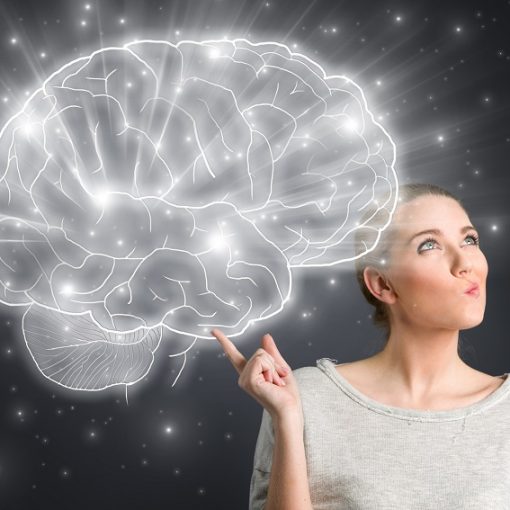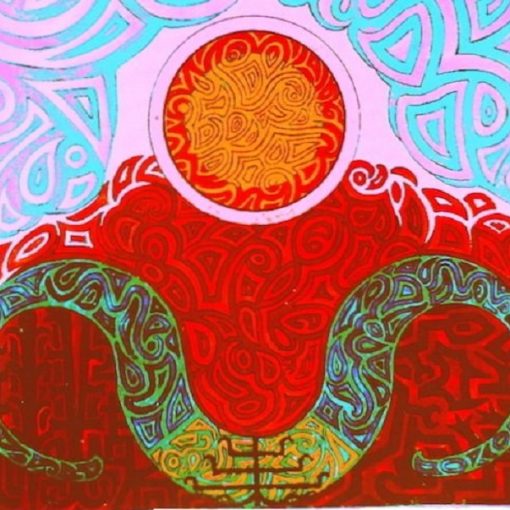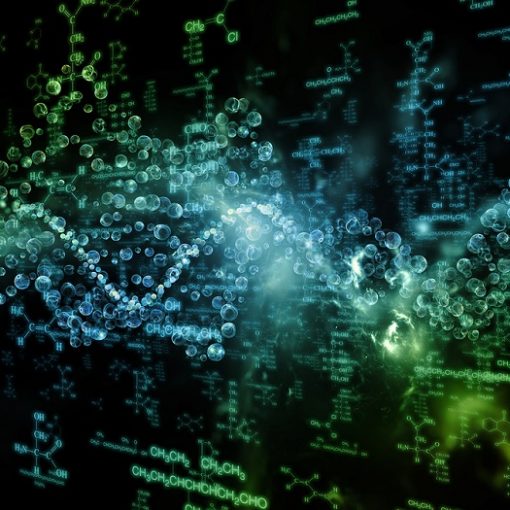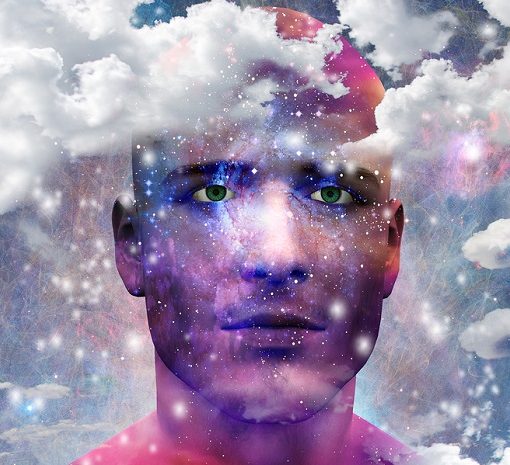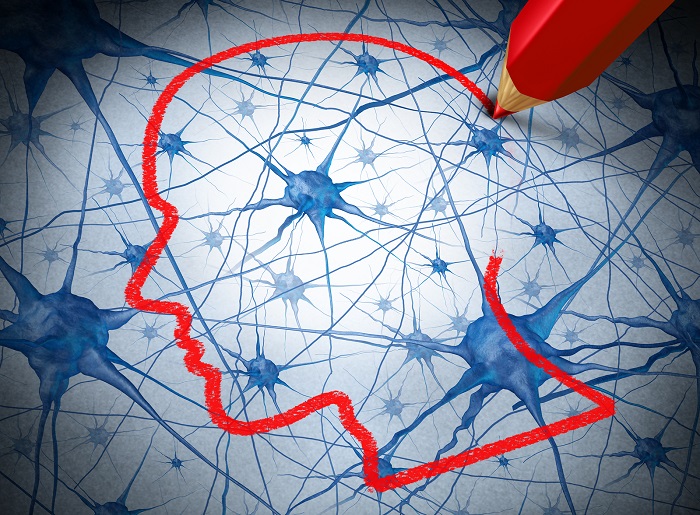
The nature of consciousness has become a hot topic in the last fifteen years. For nearly 30 years, Larry Dossey has been exploring the outer reaches of consciousness in an important series of books, where he marshals the best research evidence indicating the need for a wider and deeper understanding of consciousness and its role.
What is consciousness? Where did your mind originate and what will happen to it when you die? There is renewed interest in these ancient questions as a result of recent developments in neuroscience. These findings make possible new images of consciousness that are profoundly different from the strictly materialistic views of the 20th century.
Mirror Neurons
When we say to someone, ‘I feel your pain,’ neuroscientists now suggest that we have the necessary biological equipment to do just that. And not just pain; other emotions such as shame, embarrassment, lust, guilt, and pride may also be shared between different individuals.[i]
So-called ‘mirror neurons’ are believed to mediate the sharing. These are neurons that fire both when an animal acts and when the animal observes the same action performed by another.[ii] Mirror neurons were discovered in the early 1990s by neuroscientists in Parma, Italy, by a team led by Giacomo Rizzolatti, while studying the part of the brain in macaque monkeys that is involved in the planning of bodily movements. The researchers observed that neurons in the F5 region of a macaque’s frontal cortex became activated after he grabbed a peanut. They were astonished to see that the same area also became activated when the macaque saw a researcher grab a peanut, even though the monkey was perfectly still. ‘We didn’t believe it,’ Rizzolatti said later.[iii], [iv] He and his team found the same effect in humans. When people witnessed another individual making hand movements and facial expressions, a part of their frontal cortex that is analogous to the F5 would activate, as if the observing individuals were making the hand movements and facial expressions themselves.
The term ‘empathy neurons’ is being widely used to refer to mirror neurons. Many researchers now believe that mirror neurons mediate the sharing of not just empathy, but are also involved in cueing, mimicry, and perhaps the acquisition of language.[v] On the other hand, as we’ll see, other experts have serious doubts about whether mirror neurons can explain the conscious experience of empathy or any other complex social emotion.[vi]
Nothing but a Pack of Neurons?
Many researchers have practically equated mirror-neuron activity with empathy and other social emotions. The implication is that when mirror neurons fire, the firing causes the felt experience of empathy — a bottom-up, brain-to-mind process. As a New York Times science writer put it, ‘[Y]our mirror neurons tell you so.’[vii] This widespread interpretation reflects the view of Nobelist Francis Crick in his 1995 book The Astonishing Hypothesis: ‘’You,’ your joys and your sorrows, your memories and free will, are in fact no more than the behavior of a vast assembly of nerve cells and their associated molecules. As Lewis Carroll’s Alice might have phrased it: ‘You’re nothing but a pack of neurons.’’ [viii] Crick went further. In his subsequent book Of Molecules and Men, he wrote, ‘The ultimate aim of the modern movement in biology is to explain all biology in terms of physics and chemistry.’[ix]
According to Crick’s agenda, the parent discipline of psychology is biology, and the senior disciplines of biology are chemistry and physics. It sounds nifty, but there are serious problems. We should be cautious in assigning empathy and other manifestations of consciousness to physical structures in the brain, because of the inconvenient truth that no one knows how the physical brain is related to conscious experience. How do intracellular, electrochemical fluxes turn into thought and emotion? Is such a thing even possible? There simply is no obvious connection between the cellular activity of neurons and conscious experience. As the theoretical biologist and complex-systems researcher Stuart Kauffman puts it, ‘Nobody has the faintest idea what consciousness is…. I don’t have any idea. Nor does anybody else, including the philosophers of mind.’[x] Nobel neurophysiologist Roger Sperry took a similar position, saying, ‘Those centermost processes of the brain with which consciousness is presumably associated are simply not understood. They are so far beyond our comprehension at present that no one I know of has been able even to imagine their nature.’[xi] From the world of modern physics, Nobelist Eugene Wigner agreed, stating, ‘We have at present not even the vaguest idea how to connect the physico-chemical processes with the state of mind.’[xii] And as contemporary physicist Nick Herbert puts it, ‘Science’s biggest mystery is the nature of consciousness. It is not that we possess bad or imperfect theories of human awareness; we simply have no such theories at all. About all we know about consciousness is that it has something to do with the head, rather than the foot.’[xiii]
In other words, we are profoundly in the dark about how an activated neuron is connected with empathy or any other emotion or thought. Might the neuroscientists have it backward — i.e., might the felt experience of empathy cause empathy neurons to light up, not the other way ‘round, through what Nobelist Sperry called ‘downward causation’? Sperry was emphatic about the importance of the action of consciousness on the physical brain. He said, ‘Any model or description [of the brain] that leaves out conscious forces … is bound to be sadly incomplete and unsatisfactory…. This scheme [downward causation] is one that puts mind back over matter, in a sense, not under or outside or beside it. It is a scheme that idealizes ideas and ideals over physical and chemical interactions, nerve impulse traffic, and DNA.’[xiv]
The profusion of studies using functional magnetic resonance imaging (fMRI) to peer into the workings of the brain have had a bewitching effect on many researchers, prompting them to ignore views such as Sperry’s, choosing instead to declare the brain’s workings as the initiator and controller of all conscious and unconscious mental activity. For instance, the British neurobiologist Colin Blakemore, after reviewing the use of fMRI in communicating with patients in vegetative states and in probing the unconscious choices of normal individuals, concludes, ‘[I]ncreasingly neuroscientists are casting doubt on the significance of consciousness. They are revealing that most of what our brains do happens below the privileged arena of awareness, and that conscious states are caused by nerve cells that have already ‘made up their minds’, rather than conscious intentions which determine what our brains do.’[xv]
This is another way of saying that our neurons ‘tell us so.’ The pretzel logic of such statements usually goes unnoticed by those who make them. If Blakemore is right, then his own neurons may well have ‘made up their minds’ prior to his statement, in which case he is merely saying what his neurons are telling him to say. He has not arrived at his conclusion by careful deliberation and weighing of facts; he is an automaton controlled by his ‘pack of neurons,’ as Crick put it. For that matter, why should we believe Crick, since, according to his own assertion, ‘free will [is]…nothing but a pack of neurons’? If he has no freedom of choice, why take his opinion seriously? In practice, of course, bottom-uppers such as Crick want to have it both ways. Everyone else may be nothing but a pack of neurons, but they are special, able to prevent their own reasoning from being dictated from below. Crick is a crick in the neck of logic.
A De-hexing Ceremony
What might downward causation look like? I was involved in a case during my internship in which this issue surfaced. I was caring for a hospitalized African-American man who was dying, but I could not determine why. Every test was normal. One of my colleagues, who had grown up in the Rio Grande Valley in the Texas-Mexico borderland, knew about the activities of curanderos and brujos firsthand. Acting on a hunch, he interviewed my dying patient and discovered that a fortune-teller had hexed him when he refused to pay her. Convinced he was doomed, he was living out her curse. My colleague and I were convinced the man’s death was imminent. As a last resort, we concocted an elaborate de-hexing ceremony that we secretly carried out late one night in near darkness. It frightened the poor man terribly, but it was utterly convincing to him. The next morning he awoke with a voracious appetite, perfectly well, and left the hospital shortly thereafter.[xvi] The case illustrated the spectrum of downward causation — from a negative, near-lethal impact (believing the hex was real) to a positive, life-saving influence (believing in the de-hexing ceremony).
Hypnosis
No phenomenon in modern psychology presents greater challenges to the bottom-uppers than hypnosis. Reports of top-down phenomena abound, as when a hypnotized subject, when told that a penny placed on her arm is red-hot, erupts in a blister, a second-degree burn. These accounts reveal that the manipulation of meaning can exert physiological changes that are unusual, to put it mildly. As Princeton University psychologist Julian Jaynes explained, ‘If I ask you to taste vinegar as champagne, to feel pleasure when I jab a pin in your arm, or to stare into darkness and contract the pupils of your eyes to an imagined light, …you would find these tasks difficult if not impossible. But if I first put you through the induction procedures of hypnosis you would accomplish all these things at my asking without any effort whatever.’[xvii]
Hypnosis enables the body to behave in ways that defy ordinary neuronal function. If we are healthy, our neurons instruct our pupils to dilate in darkness, not contract. But, as Jaynes states, under hypnotic suggestion they can abandon their usual function and operate in the opposite direction. This is a severe kink in the materialists’ view that our neurons are always in charge — so severe that these events are often dismissed as due to faulty observation or downright fraud.
Another black sheep is the placebo response, one of the most prevalent top-down phenomena known. In the placebo response, what one thinks or expects a therapy to do is so troublesome that researchers spend millions of research dollars trying to rein it in. It’s warts all over again. If these unruly black sheep — hypnosis, meaning, belief, suggestion, expectation — would behave themselves, life would be a lot simpler for the bottom-uppers.
Researchers in Sperry’s downward-causation camp do not ignore or dismiss the actions of mirror or any other type of neuron; they simply believe the game is more complex than hard-core reductionists such as Crick realize. As the Oxford-trained philosopher Chris Carter describes the larger perspective in his penetrating book Parapsychology and the Skeptics, ‘It is important to stress that the lower level forces and properties, of atoms, molecules, and cells all continue to operate…. None of these causal forces have been cancelled or replaced, but they have been superseded by the properties of a higher organizational structure. According to this new view, mind and consciousness exert just as much (or even more) causal effect on the lower level structures than the lower level structures exert on them…. Sperry’s model puts mind back into the driver’s seat, and accordingly, perceptions, thoughts, beliefs, emotion, judgment, and so forth are recognized to have a real, not just imaginary, impact on the world.’[xviii]
But even if Crick were correct, and mirror neurons do function as the sole gatekeepers and controllers of our empathic moments by ‘telling us so,’ that is no guarantee they are functioning for the good of others or ourselves, since one can be empathic toward, say, Hitler, as exemplified by skinhead neo-Nazis, just as one can be empathic toward Gandhi, Nightingale, or Mandela. There is no morality in neurons.
Promissory Materialism
As far as we know, neurons don’t make consciousness, and mirror neurons don’t make empathy. To imply that they do is to descend into what philosopher of science Sir Karl Popper called ‘promissory materialism.’ This is the notion that one day, not so very long from now, we’ll be able to give a completely physical account of consciousness. Lured by periodic advances in brain science, Popper explained satirically, ‘[W]e shall be talking less and less about experiences, perceptions, thoughts, beliefs, purposes and aims; and more and more about brain processes, about dispositions to behave, and about overt behavior…. When this stage has been reached, mentalist language will go out of fashion….’[xix] Nobel neurophysiologist Sir John Eccles agreed with Popper, saying, ‘[P]romissory materialism [is] a superstition without a rational foundation. The more we discover about the brain, the more clearly do we distinguish between the brain events and the mental phenomena, and the more wonderful do both the brain events and the mental phenomena become. Promissory materialism is simply a religious belief held by dogmatic materialists…who confuse their religion with their science. It has all the features of a messianic prophecy….’[xx] Mirror-neuron cheerleaders, take note. Empathy neurons are not empathy. Confusing the two involves the fallacies of misplaced concreteness and category mistakes — confusing the map with the territory, the menu with the meal.[xxi], [xxii], [xxiii]
Parapsychology
I’ve mentioned the book Parapsychology and the Skeptics by philosopher Chris Carter. Carter’s analysis of the role of consciousness in the world is one of the most scholarly critiques to appear in recent years. With withering precision he demolishes two of the perennial, go-to objections of critics of parapsychology — that there are no repeatable, replicated parapsychology (psi) experiments, and that psi experiments cannot be valid because they conflict with the laws of nature. Carter shows that there are thousands of experiments documenting psi, with staggering odds against chance, but that it requires an open mind to recognize them. He concedes that psi is indeed incompatible with the classical, mechanical, Newtonian view of the world, but he shows that psi does not conflict with the modern, quantum-relativistic perspective. Carter’s views are hardly solitary; they follow on the heels of several similar treatises that have appeared in recent years[xxiv],[xxv], [xxvi]. [xxvii], [xxviii], [xxix], [xxx]
The insertion of psi into the debate about the role of mirror and other neurons is crucial. Neurons cannot account for the operational spectrum of human consciousness as seen in psi. Although there is a growing, vibrant discussion about possible entangled, nonlocal, quantum-biological processes within the brain and other biological systems,[xxxi], [xxxii], [xxxiii] as far as we know brains are on the whole local entities, in the sense that their actions are localized or confined to specific points in space, such as individual bodies, and to specific points in time, such as the present. Carter reviews the evidence that consciousness can manifest in ways that are nonlocal, ways that are unconstrained by space and time. In other words, psi strongly implies that consciousness can do things a brain and its neurons cannot do.
The implications are profound. If consciousness is temporally nonlocal, it is infinite in time, therefore immortal and eternal, because a limited nonlocality is a contradiction in terms; and if consciousness is spatially nonlocal, it is omnipresent. Nonlocal consciousness begins to resemble the ancient idea of soul — some aspect of who we are that has no beginning and no end, and which precedes birth and survives bodily death.
Correlation is not Causation
Following the discovery of mirror neurons, there has been a flurry of enthusiasm to enshrine empathy, altruism, and cooperation as biologically valuable human traits. Empathy and altruism are now ‘in,’ after being derided for generations by hard-core evolutionary biologists who believe that selfishness and survival of the fittest are the proper metrics for understanding human evolution and behavior — Tennyson’s ‘Nature, red in tooth and claw.’[xxxiv] But now that empathy has its ambassador in the brain in the form of mirror neurons, it’s O.K. to talk about the biological value of being nice. This turnaround is welcome, but it’s a shame we had to wait so long for the tender traits to be legitimized by brain science before considering them a legitimate aspect of who we are. Better late than never.
But how deep are these insights? Mirror neurons appear to contribute nothing that is fundamentally new to our understanding of the essential nature of consciousness. Mirror-neuron activity is a correlate of conscious experience — a widely applicable correlate to be sure, but a correlate nonetheless, not some deeply explanatory, unifying discovery where consciousness is concerned. And because ‘correlation is not causation,’ according to the venerable maxim from experimental science, we cannot say that mirror neurons cause empathy, just as we cannot say that our television sets cause the World Cup or the Superbowl game, but are correlated with them. Of course we should applaud any discovery that adds to our knowledge of how the human brain functions. But we should resist the notion that mirror neurons somehow ‘explain,’ ‘make,’ or ‘cause’ empathy or any other expression of human consciousness.
Homo empathicus
In his important book The Empathic Civilization: The Race to Global Consciousness in a World in Crisis, author Jeremy Rifkin compellingly shows that empathy offers our best hope for survival as an endangered species.[xxxv] He says, ‘A radical new view of human nature has been slowly emerging and gaining momentum, with revolutionary implications for the way we understand and organize our economic, social and environmental relations in the centuries to come. We have discovered Homo empathicus.’[xxxvi] Rifkin cites the discovery of mirror neurons as key evidence for this view.[xxxvii]
I believe Rifkin is on target about the crucial role of empathy in our future. Without empathy it is difficult to imagine how we can sufficiently cherish one another and safeguard our environment, the only home we have.
At this stage of its development, the main contribution of the mirror-neuron hypothesis is that it is a partial corrective to the view that we humans are overwhelmingly selfish creatures whose sole evolutionary imperative is to survive, reproduce, and perpetuate our genes, at whatever cost to those outside our kinship group. The mirror-neuron hypothesis suggests that we are equipped for empathy, compassion, altruism, and cooperation, in addition to being biologically geared for competition, procreation, and survival.
But empathy is no guarantee of survival, and all the mirror neurons in the world cannot prevent empathy from being overwhelmed under certain conditions. Want to know what a world without empathy might look like? The Road, by author Cormac McCarthy, and the movie of the same name, reveal a savagely cruel, depraved, dying world in which all plants and nearly all animal life have perished because of an unspecified cataclysmic event.[xxxviii] Civilization has descended into a bestial, dog-eat-dog, cannibalistic state where empathy and altruism have been extinguished, but not quite; a tattered remnant of kindness remains. McCarthy shows that empathy is not enough, however. Human life is doomed; it is only a matter of time.
An Empathy Manifesto
On Monday, March 4, 1861, Abraham Lincoln took the oath of office as President of the United States and delivered his First Inaugural Address. The situation was grim. Jefferson Davis had been inaugurated as the President of the Confederacy two weeks earlier. Things were so tense that Lincoln had arrived in Washington by a secret route to avoid danger. General Winfield Scott’s soldiers guarded his movements.[xxxix]
I have often thought that Lincoln’s magnificent words, which were meant to heal broken bonds between North and South, can be applied in a broader context. Lincoln tried to heal political disunion. Today we face a more fundamental kind of disunion, in which we have gradually seceded from a sustainable relationship with the natural world. This rupture cannot endure without horrible consequences. The concluding words that Lincoln spoke to his fellow citizens from the East Portico of the Capitol, we might contritely speak to the greater world that sustains us. We might call it an Empathy Manifesto:
We are not enemies, but friends. We must not be enemies. Though passion may have strained it must not break our bonds of affection. The mystic chords of memory…will yet swell…when again touched, as surely they will be, by the better angels of our nature.[xl]
We are involved in a race toward fully realizing the empathic consciousness that is necessary for our survival. Time is not on our side. So blink and twinkle, you empathy neurons, blink for all you’re worth!
References
[i] Rizzolatti G, Sinigaglia C. Mirrors in the Brain. How We Share our Actions and Emotions. Oxford, UK: Oxford University Press; 2008.
[ii] Rizzolatti G, Craighero L. The mirror-neuron system. Annual Review of Neuroscience. 2004; 27: 169–192.
[iii] Rifkin J. The Empathic Civilization. New York, NY: Tarcher; 2009: 82.
[iv] Miller G. Neuroscience: reflecting another’s mind. Science. 2005; 308 (5724):945-947.
[v] Arbib M. The mirror system hypothesis. Linking language to theory of mind. Interdisciplines.org. http://www.interdisciplines.org/coevolution/papers/11. Accessed January 30, 2010.
[vi] Hickok G, Eight problems for the mirror neuron theory of action understanding in monkeys and humans. Journal of Cognitive Neuroscience. 2009; 21 (7): 1229-1243. Available at: Talkingbrains.com. http://talkingbrains.blogspot.com/2009/02/eight-problems-for-mirror-neuron-theory.html. Februarly 10, 2009. Accessed January 30, 2010.
[vii] Blakeslee S. Cells that read minds. The New York Times. January 10, 2006. http://www.nytimes.com/2006/01/10/science/10mirr.html?_r=1&pagewanted=all. Accessed January 29, 2010.
[viii] Crick F. The Astonishing Hypothesis. New York, NY: Scribner; 1995: 3.
[ix] Crick F. Of Molecules and Men. Amherst, NY: Prometheus; 2004: 10.
[x] Kauffman S. God enough. Interview of Stuart Kauffman by Steve Paulson. Salon.com. http://www.salon.com/env/atoms_eden/2008/11/19/stuart_kauffman/index1.html. Accessed January 30, 2010.
[xi] Sperry R. Quoted in: Brian D. Genius Talk: Conversations with Nobel Scientists and Other Luminaries. Amsterdam, Netherlands: Kluwer Academic Publishers; 1995: 367.
[xii] Wigner EP. Are We Machines? Proceedings of the American Philosophical Society. 1969; 113 (2): 95-101. Jstor.org. http://www.jstor.org/stable/985959. Accessed February 2, 2010.
[xiii] Herbert N. Quantum Reality. New York, NY: Anchor/Doubleday; 1987: 249.
[xiv] Sperry RW. Mind, brain, and humanist values. Bulletin of the Atomic Scientists. 1966; XXII (7): 2-6. UNCW.edu. http://people.uncw.edu/puente/sperry/sperrypapers/60s/125-1966.pdf. Accessed February 3, 2010.
[xv] Blakemore C. Do we want brain scanners to read our minds? Telegraph.co.uk. http://www.telegraph.co.uk/science/7159464/Do-we-want-brain-scanners-to-read-our-minds.html. February 4, 2010. Accessed Feb. 6, 2010.
[xvi] Dossey L. Space, Time & Mediciine. Boston, MA: Shambhala; 1982: 2-6.
[xvii] Jaynes J. The Origins of Consciousness in the Breakdown of the Bicameral Mind. New York, NY: Mariner Books; 2000: 379.
[xviii] Carter C. Parapsychology and the Skeptics. Pittsburgh, PA: Sterlinghouse; 2007: 112-113.
[xix] Popper K. Quoted in: Eccles J, Robinson DN. The Wonder of Being Human. Boston, MA: Shambhala; 1985: 36.
[xx] Eccles J, Robinson DN. The Wonder of Being Human. Boston, MA: Shambhala; 1985: 36.
[xxi] Fallacy of misplaced concreteness. Wikipedia. http://en.wikipedia.org/wiki/Fallacy_of_misplaced_concreteness. Accessed January 31, 2010.
[xxii] Category mistake. Wikipedia. http://en.wikipedia.org/wiki/Category_mistake. Accessed January 30, 2010.
[xxiii] Map-territory relation. Wikipedia. http://en.wikipedia.org/wiki/Map-territory_relation. Accessed January 31, 2010.
[xxiv] Broderick D. Outside the Gates of Science: Why It’s Time for the Paranormal to Come In from the Cold. New York, NY: Thunder’s Mouth Press/Avalon Publishing Group; 2007.
[xxv] Mayer, Elizabeth Lloyd. Extraordinary Knowing: Science, Skepticism, and the Inexplicable Powers of the Human Mind. New York, NY: Bantam/Random House; 2007.
[xxvi] Schwartz SA. Opening to the Infinite: The Art and Science of Nonlocal Awareness. Buda, Texas: Nemoseen; 2007.
[xxvii] Radin D. The Conscious Universe. San Francisco: HarperSanFrancisco; 1997.
[xxviii] Radin D. Entangled Minds. New York, NY: Paraview/Simon & Schuster; 2006.
[xxix] Kelly EF, Kelly EW, Crabtree A, Gauld A, Grosso M, Greyson B. Irreducible Mind: Toward a Psychology for the 21st Century. Lanham, MD: Rowman and Littlefield; 2007.
[xxx] Powell DH. The ESP Enigma: The Scientific Case for Psychic Phenomena. New York, NY: Walker & Company; 2009.
[xxxi] Garfield M. The spooky world of quantum biology. hplusgazine.com. June 1, 2009. http://hplusmagazine.com/articles/bio/spooky-world-quantum-biology. Accessed February 10, 2010.
[xxxii] Hameroff S, Penrose R. Conscious events as orchestrated space-time selections. Quantumconsciousness.org. http://www.quantumconsciousness.org/penrose-hameroff/consciousevents.html. Accessed February 10, 2010.
[xxxiii] Engel GS, Calhoun TR, Read EL, Tae-Kyu A, et al. Evidence for wavelike transfer through quantum coherence in photosynthetic systems. Nature. 2007; 446: 782-786. Abstract available at: Nature.com. http://www.nature.com/nature/journal/v446/n7137/abs/nature05678.html. Accessed February 10, 2010.
[xxxiv] Tennyson A. In Memoriam A. H. H. Canto 56. 1850. Phrases.org. http://www.phrases.org.uk/meanings/red-in-tooth-and-claw.html. Accessed January 31, 2010.
[xxxv] Rifkin J. The Empathic Civilization. New York, NY: Tarcher; 2009.
[xxxvi] Rifkin J. The Empathic Civilization. New York, NY: Tarcher; 2009: 43.
[xxxvii] Rifkin J. The Empathic Civilization. New York, NY: Tarcher; 2009: 82-90.
[xxxviii] McCarthy C. The Road. New York, NY: Vintage; 2006.
[xxxix] Abraham Lincoln. Bartleby.com. http://www.bartleby.com/124/pres31.html. Accessed February 1, 2010.
[xl] Lincoln’s First Inaugural Address. American Treasures of the Library of Congress. http://www.loc.gov/exhibits/treasures/trt039.html. Accessed February 1, 2010.

